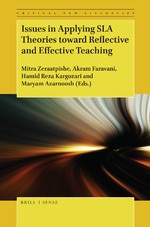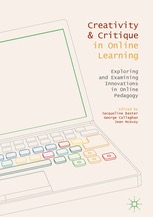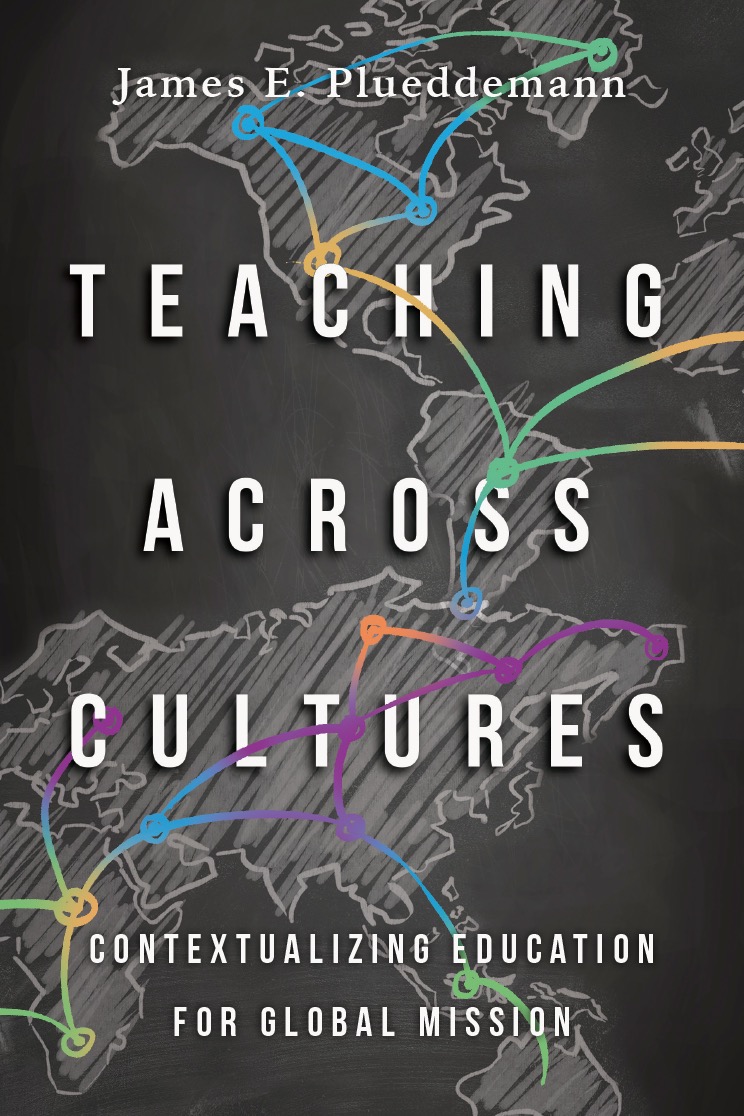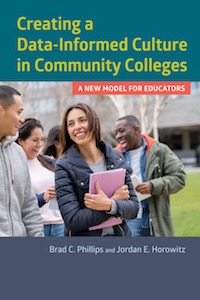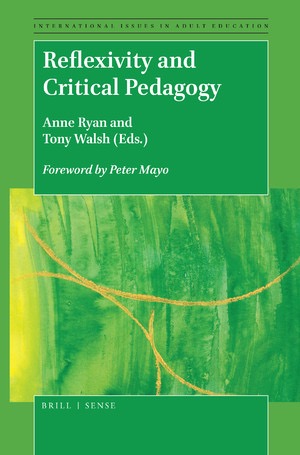student learning
Select an item by clicking its checkbox
Date Reviewed: December 10, 2019
Issues in Applying SLA Theories (hereafter Issues) comprises volume seven in the series, Critical New Literacies: The Praxis of English Language Teaching and Learning (PELT).
What is meant by reflective teaching? In their article on writing, Zeraatpishe and Azarnoosh offer the following definition: “Reflection is regarded as a process through which teachers observe their beliefs and practices, assess, restructure their teaching and learning so that they can better situate themselves as agents of change in the immediate contexts of teaching” (165). Effective teaching, in contrast, involves conscious monitoring of student needs and progress, followed by corresponding adjustments in one’s instruction.
Issues is a collection of fourteen essays by a global array of authors. Most hold doctoral degrees, with teaching experience ranging from assistant professors to emeritus professors. Several serve as editors of major publications in the field of Second Language Acquisition.
Part One concentrates on six theories that have influenced language learning pedagogy. Part Two addresses eight skills necessary for learning a language.
Theories explored in Part One include behaviorism, cognitive approaches, constructivism, connectionism, interactionism, and critical theories. Behaviorism’s attention to stimulus and response led to the emphasis on language drills found in the Audio-Lingual Method. Cognitive approaches bring together rationalist and empiricist viewpoints, valuing both Chomsky’s innate Universal Grammar and also the importance of learning through experimentation. Constructivism in language learning involves forming increasingly more complex categories of information by analyzing similar elements, whether individually (cognitive constructivism) or in community (social constructivism). Connectionism draws from the design of digital computers to consider how parallel distributed processing (or artificial neural networks) serve the task of pattern recognition. Interactionism holds that language learners benefit from conversational communication, which involves input, negotiation of meaning, noticing, and second language output. Critical Second Language teaching would value “a listening phase on the part of the course designer or teacher, and… finding out about the learners’ real lives and needs” (70), then creatively adjusting the course correspondingly.
The remaining eight chapters turn from theory to praxis, exploring what it means to teach particular skills in a reflective and effective manner: pronunciation, grammatical competence, vocabulary, idioms, speaking, writing, listening, and reading. For example, instructors are encouraged to journal after class sessions to become attentive to trends in student performance of pronunciation. Grammatical competence can be enhanced by immersive use of illustrated fiction readings, with discussion and open-ended composition assignments. Vocabulary learning will be more effective as students are encouraged to master roughly 2000 words, whether isolated lexemes, word families, or phrasal vocabulary, so that they may produce them in speech and in writing. Idioms will be learned more effectively through a pragmatic approach that is attentive to context and the speaker’s aims. Speaking will improve as instructors facilitate conversation that is incremental and attentive to stages of students’ proficiency. Writing instruction can be segmented into eight discreet stages. And listening comprehension improves as students appreciate and attend to specific processes at work during periods of concentrated listening. Reading fluency, defined as the ability to read “effortlessly and confidently at a level of understanding and a rate appropriate for the purpose or task and the material” (Day, 203), requires automatic recognition of words which results from students having read large quantities of easy and interesting material.
Instructors of English as a Foreign Language comprise the principal audience for Issues. Those who, like the reviewer, teach a classical language will benefit primarily from R. R. Day’s insights concerning literacy (199–208), and also from Nurmukhamedov and Plonsky’s essay on vocabulary (115–26).
Date Reviewed: December 10, 2019
Online learning has come a long way in twenty years. Although distance education has been around in one form or another for a really long time, online education had fairly humble beginnings in California in the late 1990s. As noted in the foreword of Creativity and Critique in Online Learning, “At the end of the 1990s the internet was seen as an interesting application, but not necessarily relevant to all subjects or modes of teaching” (vii). The initial benefit of distance and online education was that it would connect learners together in a networked classroom that spanned further than four cinderblock walls. What initially started as a distance enterprise, where students would log in to a remote learning server and be funneled into a class with potentially dozens to hundreds of other faceless paying customers (and may or may not have received an actual education), the Learning Management System (LMS) has evolved into a “commonplace and essential piece of technology infrastructure in almost every university” (viii). Yet creativity does not come without critique, as is often the case when boundaries are stretched and broken. This volume provides a summary of the creative side of online learning as well as a critique of the overall process, at least within the purview of Open University’s experience as a leader in online learning, answering significant challenges and squashing anecdotal myths throughout.
The editors and contributors, all of whom are either faculty at Open University or products of one of Open University’s online programs, seek to rewrite the narrative regarding online education. Rather than asking “Can online study really replicate the challenges and occasional joy of learning in a face to face environment?” (2), these contributors shift the focus to answering questions such as “How can [online learning] help teach the ‘hard to reach’ and how can it provide learning for those who have failed in (or rejected) learning in a face to face context?” (2). Putting aside such arguments as online education being more cost-effective in a bloated yet dwindling brick-and-mortar learning environment and what tools and techniques work the best in an online context, the contributors pull directly from their experience and ground their findings in action research that seeks to add a cogent and coherent voice to the ever-widening field of online learning studies. Creativity and Critique in Online Learning presents real-world problems with and in online learning with real-world solutions from real-world practitioners, some of which worked and some which did not. Of particular note in this volume are the chapters on developing effective forums (chapter 3), engaging students in informal learning communities (chapter 5), addressing concerns with academic dishonesty (chapter 7), and developing appropriate yet effective teacher-learner relationships (chapter 11).
Overall, I found this volume helpful. As the director of a completely online graduate program in biblical studies and Christian leadership, I recognize the growing challenge of developing online learning experiences that are academically rigorous while also developing spaces for relational connection and personal growth. I was afraid this book would be another “do it our way” argument. However, the essays are more akin to the casual conversations we catch over coffee at a professional conference than the peer-reviewed “expert” keynote that we actually paid to hear.
Date Reviewed: December 10, 2019
As a Roman trained missiologist who teaches intercultural pedagogy and ministry, as someone who grew up on the US-Mexican border and who has worked in religious formation since the age of twelve, I was drawn to this book’s title and cover design, a world map on a chalk board. I am blessed with a large number of international graduate students, most of whom will be returning to their home countries or will be called to work internationally. The book’s title seemed a tall order – but it did not in the least disappoint.
Penned by a seasoned missiologist and professor who knows how to draw educationally from his extensive international travel and work abroad, the work is exceptionally readable, one which strives to integrate course content, or knowledge of the biblical tradition, with contemporary human experience, or alternatively phrased, an appreciation for an ongoing dialogue between a course being content-centered and student-centered. Plueddemann does this especially by engaging Edward Hall’s highly effective categories of “high and low context” styles of communication, together with Geert and Gert Jan Hofstede’s development of power distance. Filled with examples and anecdotes, not only from his own teaching but also from other practitioners appropriately placed at the end of every chapter, he makes a strong case for paying attention to biblical pedagogy, one which is profoundly experiential and cognizant of diverse contexts. His sources are carefully selected so as not to overwhelm the reader with jargon and very applicable to those wishing to respectfully do global Christian mission in a way in which Bible and culture inform each other, especially in contexts which are much more communal than our U.S. contexts. His brief inclusion of key learning theorists such as Piaget, Lewis, Dewey, MacDonald, and Freire show their continued relevance, and provide a necessary bibliography for further study.
It is not often that we find good pedagogical material specifically aimed at teaching theology or religion, so this little gem is a welcome one, a work carefully tailored to shifting contexts, learning styles, and contemporary media globalization. Much to my amazement, Plueddemann’s tools can be applied to a variety of educational tasks such as teaching language, preaching, summer camp work, Sunday school, mentoring and coaching, and even parenting. His appreciation of the teaching potential of novels and other forms of art provides ways in which teachers unfamiliar with local contexts can begin to enter these learners’ worlds. Teaching across Cultures’ ecumenical sensibilities, similarly, such as the inclusion of the work of Thomas H. Groome, well-known in Catholic educational circles, makes it a useful text beyond the Protestant world.
Will I assign this text? Definitely! My own use of some of the biblical and anthropological tools he cites will be enhanced by his examples of how they can be applied to educational and pastoral settings, not only to those which demand intercultural sensitivity, but even to those which we think we already understand.
Date Reviewed: December 10, 2019
Armed with strong backgrounds in institutional research and effective educational leadership, Phillips and Horowitz provide educators with an excellent resource for improving academic success with proven data use strategies and practices for community colleges. A central, uniting focus of the book is the need for information to be contextual, “useful, useable, and actionable” (9), and the need to enlist the widest number of stakeholders within its ecosystem. Administrators, researchers, faculty, and staff are encouraged to be co-partners in cultivating academic excellence.
Rather than placing data at the center, the authors advocate for a model that places “the use of data” at the center. The book is divided into three sections: (1) “A New Model for Data Use,” (2) “Putting the Model to Work,” and (3) “Case Studies of Data Driven Reform.”
The first part outlines a new model for data use that is user-friendly, improves educational instruction, and maximizes student success, combined with intentional adaptation to those it serves. For example, “few educators want to [be] analysts; they want to be provided with useful information and assisted in applying it toward student success” (56). Attention is also given to analytics, behavioral economics, organizational theory and habits, and the role of emotion in decision making.
In the second section, Phillips and Horowitz reveal a data use model that is put to work removing obstacles to student success. Specific consideration is given to leading and lagging indicators and the employment of backward mapping that begins with the identification of lagging indicators or goals. Attention is then refocused on the leading indicators that influence them, and which a college has the ability to control and reshape in proactive ways. Lagging and leading indicators have the ability to switch places from time to time. Scrutiny is also given to disaggregation and how different demographic subpopulations can impact the design of programs, services, and policies. The authors make use of a four stage, continuous improvement approach for use of educational strategies that moves from assessment, to planning, to implementation, to monitoring, and back again to assessment (110). They believe that data should be processed in manageable bites and reflect an institution’s unique cultural context and problem areas (176).
When evaluating outcomes of particular programs or services, Phillips and Horowitz call for academic institutions to review all other policies and programs that may or may not have an impact, positively or negatively. When introducing data and discussing it educators need to make sure that the content is real, that they include moments of humor, that they engage with the data, and that it works towards a consensus in decision-making. Resistance is another key factor for community colleges to scrutinize. College staff often bring their “own history of belief and experiences to the process and accept only information that confirms those beliefs” (104). Helping people to move outside their comfort zones and embrace change can assist in creating a positive, data-informed culture.
The last section provides actionable approaches and case studies drawn from community colleges from differing socio-economic and ethnic settings that intentionally choose to embrace a data-informed culture and foster proactive uses of information for student success. A failing institution was among the colleges examined – it had been on the verge of being shut down by state authorities because of dissatisfaction with its academic quality and student success.
This book is more than a guide for interpreting data by academic researchers. It also provides a research-based, comprehensive, and practical approach for improving academic excellence in all areas, and amongst all segments of the college community. This book will help teachers of religion and theology to increase their classroom effectiveness – in lecturing and interacting with students.
Date Reviewed: December 10, 2019
There are these two young fish swimming along and they happen to meet an older fish swimming the other way, who nods at them and says "Morning, boys. How\'s the water?" And the two young fish swim on for a bit, and then eventually one of them looks over at the other and goes "What the hell is water?” David Foster Wallace, This Is Water
Upon reading this volume, I was repeatedly reminded of the late David Foster Wallace’s speech, “This is Water” (Little, Brown, and Co., 2009). Foster’s commencement speech hones in on some underlying themes of life many of those in higher education hope to instill in our students. Most importantly, I think, is the lesson that the most powerful influences on us are often those in which we are continually swimming but which we often cannot see. We must learn the practice of “seeing” the water we swim in. The practice is imperfect, messy, and will not make you particularly fun at parties, but it is vital for any transformative learning to occur. We can do this in a myriad of ways, such as those laid out in this volume, by practicing reflexivity.
What is reflexivity? The editors, influenced by Foucault’s concepts of discourse, knowledge, and power, define reflexivity as “encompassing a critical assessment of the significance of environment, power, and context as well as subjectivity in the delineation and construction of knowledge” (1). Reflexivity implies “a responsibility to critically examine our world, and how we position ourselves, and are positioned in that world” (1). Reflexivity is not narcissistic navel-gazing; it involves an intimate interrogation and critical examination of the personal, political, and professional. It is a practice. Contributor David McCormack describes reflexivity as the “practitioner’s attempt to turn their awareness to whatever is happening at any given moment at a personal, interpersonal, organizational, and societal perspective and to use that to illuminate the interpersonal dimension in their work” (122). The self is not freestanding – it always has a context.
Why is reflexivity critical to education? Education must be reflexive in order to avoid being merely indoctrination. Education can make space for reflexivity, can give educators and students an opportunity to analyze not just “what works” but also to interrogate for whom does it work and to what end. Learners need spaces to confront dominant narratives and cultures, and educational spaces can provide just that.
Contributors to this volume are primarily affiliated with the Department of Adult and Community Education at Maynooth University in Ireland. Each was invited to “challenge traditional thinking in education” (10). The chapters of this volume exemplify a myriad of ways reflexivity can be practiced in educational spaces. Despite this variety, each of these contributions emphasize the critical imaginative element among practitioners, a willingness to see things as possibly otherwise. Whether the reflexive practice happens within discursive analysis, writing, theater-making, transformative learning, systems theory, defining citizenship, facilitative work, or narrative inquiry, it requires imaginative capacity and a willingness of the practitioner to critically examine the very bedrock of their experience and the systematic assumptions underlying their everyday reality.
This book would be especially helpful for educators and administrators hoping to equip their students with theoretical tools and practical exercises aimed at “bringing to light dynamics of power which privilege conformity” and “revealing the normally occluded dynamics of dominant discourse”(6). It is also a resource for those who see themselves occupying hybrid spaces: those who acknowledge a multiplicity of knowledges and competing and intersecting realities and experiences, who interrogate and trespass boundaries, and, overall, who strive to “see” the water in which they swim.
